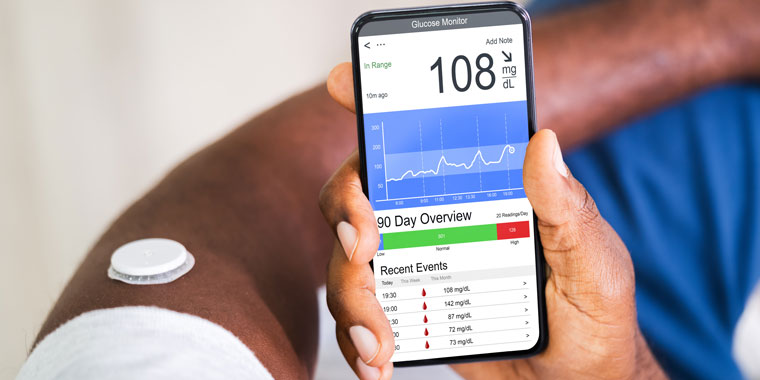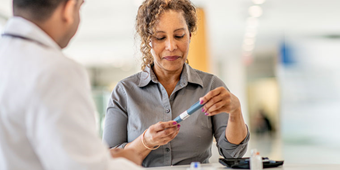Monitoring Innovations In Diabetes Treatment

Answer a few questions and we'll provide you with a list of primary care providers that best fit your needs.
When you have high blood sugar associated with diabetes — and trouble controlling it — you run the risk of serious long-term health complications. These include eye, kidney, and heart disease, even amputation.
You’re far from alone, as millions of Americans have been diagnosed with type 1 and type 2 diabetes.
That’s why researchers are constantly working to find better ways to help you and your doctor treat and manage your blood sugar. Two promising developments have made headlines recently, so Premier Health Now took a moment to talk about them and other diabetes management tools with diabetes specialist Trisha Zeidan, MD.
The first development we discussed: a clinical study of a treatment for people with type 1 diabetes, whose bodies don’t naturally produce insulin, the hormone that helps the body's cells use sugar (glucose) for energy. Without insulin, the sugar builds up in the bloodstream.
This treatment infuses patients with insulin-producing cells, grown from stem cells, and is showing promising early results.
“The thought of the treatment as a potential cure is really appealing,” says Dr. Zeidan. But, she cautions, the study currently involves only 17 adult participants. They include a retired postal worker featured in news reports about how the treatment has restored his body’s ability to produce insulin and control his blood sugar.
“Most therapies for diabetes go through rigorous trials and potentially tens of thousands of participants in clinical trials before they’re approved by the FDA,” she says.
Questions remain, such as the treatment’s long-term effectiveness, risks versus benefits, and whether the therapy could also be used for children.
The second development we discussed: the first tubeless automated insulin delivery system that combines an insulin pump and continuous glucose monitor, controlled with a smartphone app. FDA approval is expected soon.
The main components of the new system — the insulin pump and continuous glucose monitor — are not new. But designed without tubes, and with a smartphone app that replaces a separate controller device, the new system promises to be easier for users to carry as they go about the activities of daily living.
“The tubeless system is good for active people and people with jobs where insulin delivery tubing could easily get pulled out,” Dr. Zeidan says. “You pull out your tubes, you can’t get your insulin.”
The new system, she says, “broadens the scope of choices people have. I tell people that I don’t care what medical bling they have. I care that it’s the medical bling that they want, and that works well in their life.”
The ‘Underutilized’ Proven Blood Sugar Tool
Over the past several years continuous glucose monitors have proven their value in helping people live with type 1 and 2 diabetes, Dr. Zeidan says. And she believes that more people with diabetes could benefit from them. (If that could be you, talk with your doctor.)
“I think it’s very underutilized as a tool that individuals can use as a self-management tool so that they can engage better in their diabetes, so they know what their glucose is. They’ll know what direction it is going and where it’s been.”
A CGM, she adds, gives you valuable information to take to medical appointments. “Why be fearful about going to your doctor, when you can come in and say, ‘I already know what my problem is, doc. My numbers are high after dinner. How can we address that?’ Rather than coming in and not having a clue about what’s going on.”
CGMs, which Dr. Zeidan calls “glucose time machines,” allow you to follow blood sugar trends over time (for instance, before and after you eat, before and after exercise, when you’re stressed) and allow you to adjust medications accordingly.
“They’re still the strongest tool available to help manage diabetes, type 1, type 2, and for people who’ve recently been diagnosed or have had diabetes for 25 years. It’s almost like a guardian angel in the background helping with your glucose control.”
And that helps you spend more time in a healthy blood sugar range. Which, Dr. Zeidan explains, “means better A1c (the average level of blood sugar over two to three months) and decreased risk of progressive complications of diabetes, like eye disease, kidney disease, numbness and neuropathy symptoms, and heart disease.”
Answer a few questions and we'll provide you with a list of primary care providers that best fit your needs.
Source: Trisha Zeidan, MD, Bull Family Diabetes Center




